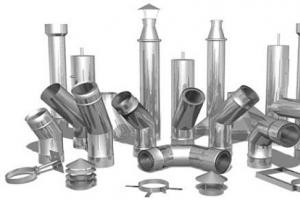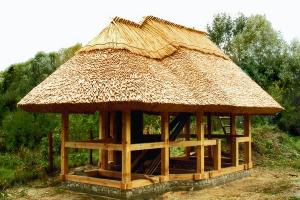With the arrival of spring, tulips planted in the flowerbed delight with bright colors. Like all flower crops, they require attention and care. The main requirements for growing these wonderful perennials are to replant the tulip bulbs every year. In order for the plant to please with beautiful large flowers, you should familiarize yourself with the rules of agricultural technology.
Biological features of culture
When growing tulips, summer residents sometimes cannot achieve good results. The crop often gets sick, the stems grow unevenly, are twisted, and the flowers do not have a standard size. To avoid failures, you need to know about the main components of a tulip:
- The root system of a flower develops from the embryonic root of the seed, and the remaining roots extend from the lower part of the bottom of the bulb and are called adventitious. A lot of such appendages are formed, but they die off every year.
- The bulb is the main part of the plant. It collects the nutrients the flower needs, it is the reproductive organ from which the stem, leaves and flower grow annually. The scales covering the bulb perform storage and protective functions.
- The stem is erect, strong, stretches upward and bears a colorful single flower.
- The plant has few leaves. They start at the base of the aerial part, grow to mid-length and form a green surrounding.
- Annual flower. It has six falling leaves. It stands out for its richness of shapes and variety of shades.
- The fruits complete the life cycle of the flower. Each nest of the triangular box contains small seeds - the future of the tulip.

Reasons for moving to another place
The dream of any summer resident is colorful spring flowers in a flowerbed, but before you start growing, you need to figure out why the crop is being replanted. Transplanting tulips is a necessary undertaking. Plants can bloom in one place for up to four years, but every year the flowers become smaller and lose their color.
Annual replanting preserves the varietal characteristics of the flower crop, retards growth, and gives the plantings a cultivated and decorative appearance. In a flowerbed, the bulb buries itself, and after a few years it is difficult to find it in the ground.
There are plenty of reasons for replanting tulips; sometimes the plants themselves indicate the need for replanting:

Is it possible to replant blooming tulips?
It is not recommended to replant specimens preparing for flowering or flowering, but if an emergency arises, this should be done very carefully and carefully. It is better to dig up plants when the sprouts have not had time to grow, before the buds appear.
They need to be removed with their roots, the shovel inserted into the soil as deep as possible and scoop up more soil. But practitioners argue that it is better to cancel such a risky undertaking and postpone it until the autumn season.
When can you replant tulips?
You should wait for certain signs and suitable weather conditions. The flower crop should finish flowering and dry out. This usually occurs at the end of the first month of summer. Tulips need to be replanted after flowering.
After waiting until the protective scaly layer covering the bulb turns yellow, but does not begin to take root in the soil, you can start replanting. It is better to dig up plants in dry, sunny weather. Only after identifying all the signs of readiness can you think about transplanting to another place.

Advantages and disadvantages of spring transplantation
Only serious reasons force this procedure to be carried out at this time of year, and it is very important to know how to replant plants correctly in the spring. It is not advisable to do this in the spring, since the bulb has very little time to take root. Spring transplants also have their own tricks, you can always use them:
- Each plant bulb is not taken out separately from the ground, but is transplanted to a new place with a large lump of soil.
- For spring planting, the material is prepared in the summer. The heads are stored for the required period, and in winter they are buried in a container with soil. With the onset of spring, after the first shoots appear, they are planted in the planned place.
But spring replanting does not guarantee that the plant will take root well, will not get sick, and will give the owner colorful blooms in the same year. Usually, after such plantings, the flower crop blooms profusely only after a year.
Pros and cons of autumn transplantation
Planting tulips in the fall is a good time with the least risk of damaging the bulbs. The event should begin several weeks before the first frost, for example, in the first ten days of October.

The transplanted bulb will not have time to germinate before winter, but will be able to take root and prepare for wintering. But autumn also has its downsides. It is very difficult to adapt to weather conditions and calculate the time when it is best to transplant tulips.
Very early replanting and warm weather will allow the plants to take root and germinate, which will destroy the plants with the onset of frost. During later planting, the bulbs will not have time to take root, which also often leads to their death. Sometimes it is very difficult to determine when to plant flowers.
Technology and process specifics
The time for replanting tulips depends on the climatic characteristics of the region. The main conditions for transplanting bulbs are compliance with all preparatory measures and temperature preferences of the crop. In the specifics of the event, there are technological rules that should be followed:
- The bulbs are removed from the soil.
- Small onions are torn off from large heads.
- Planting material is sorted and calibrated.
- Damaged bulbs are sifted out and destroyed.
- The heads are dried in a well-ventilated place.
- Planting sites are constantly changing.
- Before replanting, fertilize the soil.
- The work is carried out in optimal weather conditions.

Digging up the bulbs
Tulip heads are dug up for replanting in mid-summer. There is no need to delay the procedure. If you keep the tubers in the ground, they will take root, this will negatively affect the condition of the disturbed plant.
To avoid damaging them, you should focus on the remains of dried stems.
Small bulbs must be handled very carefully - this is also planting material from which flowers can be propagated. The bulbs are carefully cleaned of soil, old root shoots and last year’s hardened scales are removed. Everything is done extremely carefully, without damaging the heads.
Drying
If tulips are dug out from wet soil, they need to be washed in water or a disinfectant solution and dried thoroughly. For processing, a weak composition of potassium permanganate is used. Next, the planting material is laid out in layers in a cardboard box and put away in a cool, dark place. Thus, they dry and are stored until autumn. Before planting, the box is taken out, the bulbs are inspected for disease and the dried ones are removed and thrown away.

Pre-planting treatment of bulbs
Before planting, the bulbs need to be laid out on the table and each one carefully examined for damage, rotting or signs of disease. The hard covering husk is removed from them, since it is under it that there may be foci of lesions and infections that are not immediately noticeable.
The heads, cleared of the scaly layer, better absorb nutrients from the soil. The bulbs are cleaned very carefully, avoiding damage. After cleaning, they are treated with potassium permanganate or an infusion of crushed garlic.
Landing at a new place
When the preparatory procedures are completed and the most suitable soil temperature is selected, planting work begins. Holes are made in the area, the diameter and depth are selected to match the size of the tuber.

Large heads are deepened into the soil, the children are lightly pressed into the ground and sprinkled. Before planting, the holes are moistened abundantly. During moistening, you should wait for the ground to absorb moisture, only after that the bulbs are lowered into the ground. The plantings are dug in and watered again.
Care after transplant
Care does not require serious knowledge. The main thing in this process is care and attention. To prevent plants from being attacked by weeds after shoots appear, the soil is covered with mulch. When there is no rain, regular watering is carried out.
If the soil is not mulched, periodically loosen the soil around the plants and repeat this after rain or moistening of the soil. When seedlings appear, the required amount of fertilizer containing nitrogen is introduced into the ground; this will have a beneficial effect on the growth and flowering of the crop.
Growing tulips is a very exciting and interesting process. But in order for the results to be pleasing, you need to become familiar with the biological characteristics of the crop and the technology of planting work.
Few flower gardens or gardens are complete without bright, beautiful and fragrant flowers. Our gardeners are already accustomed to the fact that these unpretentious plants delight with their flowering even with minimal care. But, in some cases, tulips need to be replanted. Next we will talk about when to transplant them to another place in the summer, autumn, spring.
When can you replant tulips?
It is quite difficult to name the exact timing of transplanting tulips. Often, such subtleties depend to a large extent on the characteristics of the plant variety itself. But there is still an optimal time period when the plant will take root in the ground in the best way - this is autumn (from the first ten days of September to the first ten days of October).
A plant planted during this period of time will have time to take root quite firmly in the ground, prepare properly for wintering and will promptly enter the flowering phase.
But, unfortunately, autumn replanting is not always possible. Many people are interested in the question: is it possible to replant tulips in the spring? Gardeners give a rather twofold answer to this question. I guess, yes. But you should act with extreme caution and handle the bulbs with extreme caution.
Attention! When transplanting tulips in spring, you should not wait for the plant to bloom on time. In addition, with a greater degree of probability we can say that the plant may not grow so beautiful and bloom wildly. But with the right approach, the result will be positive.
It is worth noting that spring planting will best be tolerated by those tulips that “survived” the winter in special containers. In this way, the transplant can be carried out as efficiently as possible, practically eliminating the possibility of damage to the flower bulbs.
In what cases is transplantation possible?
To understand the advisability of transplanting tulips, you first need to find out in what cases it is generally worth carrying out such a procedure, because this plant can quite easily “live” in one place for up to 4 years.
So, the first and quite logical reason for replanting a tulip may be its long period of stay in one place (longer than 4 years). The second reason for replanting (and urgently) may be the absence or insufficient flowering of the plant or the deformation of its flower petals. Such “symptoms” indicate that the plant is being damaged by pests or that the soil is not quite suitable for the tulip.
Subtleties of the flower transplantation process
As mentioned earlier, replanting a tulip is possible over several periods. More on this later.
Spring planting
Transplanting in the spring, of course, is not the most desirable, but when there is no way out or the circumstances are so, it is important to know how to do it correctly. So, first you need to select the most beautiful and healthy bulbs and plant them in a container with prepared soil. Choose the container very carefully: its depth should not exceed 15 cm. It is better to carry out the transplantation process by the end of April.
When planting bulbs, try to maintain a minimum distance of 3 cm between them. After planting, be sure to sprinkle them with a few centimeters of soil and water them carefully. When the first shoots appear, you can plant the plant in open ground.
Advice. If the tulips have already begun to bloom, it is not advisable to replant them, since many varietal plants react quite sharply to this process. If the circumstances are this way, then try to act as carefully as possible: dig up each flower with a large lump of earth, carefully move it to a new place. Fill the holes with soil without compacting it. Water lightly.
Autumn planting
As for autumn planting, as mentioned earlier, this is the most gentle option for tulips. So, start replanting approximately by mid-July. At this point, the scales on the bulbs will turn brownish. Try not to be late, otherwise the plant will begin to take root, and then the replanting process will become much more difficult. Leave the dug up bulbs to dry either in the fresh air or in a well-ventilated area.
At the beginning of autumn, dry bulbs must be thoroughly cleaned of husks and dry stems, kept in weak potassium permanganate to protect them from pests and diseases, dried and planted in the ground.
Remember, the area for transplantation should be virtually windless and sufficiently lit. The soil must be fertilized on the eve of planting.
That, in principle, is all you need to know about the intricacies of transplanting tulips to a new place. Good luck!
How to plant tulips correctly: video
When transplanting tulips into open ground, the characteristics of the local climate and soil are taken into account. Experienced gardeners say that the most suitable time for this is autumn. If you plant the bulbs in the spring, they will not ripen. Therefore, replanting is carried out in the fall - in October. For flowering to occur, the bulb bud must be ripe. But many still take risks and plant these flowers in the spring. You can use plant bulbs that were not planted in the fall for forcing (long-term and proper storage). After the tulips fade, the bulbs are dug up and sent to a box for preservation. With proper preparation and care of the tubers, the finished planting material is planted in open ground in the spring.
How to prepare the bulbs?
In the wild, tulips bloom in early spring, and when the heat comes, the flower fades. All its vitality is concentrated in the bulb, so the plant goes deeper into the ground so that when the autumn coolness comes, it will release new roots. With the onset of spring, new flowers will grow from them. The tulip bulb vitally needs cold weather in order to accumulate useful components, thanks to which the plant grows and blooms.
Gardeners who decide to plant tulips in the spring should consider the following factors:
- 1. Before planting, strengthen the tuber’s immune forces. This can be done by placing a box of flower bulbs at the bottom of the refrigerator, where the temperature is kept within 4 degrees above zero.
- 2. Protect from diseases and pests. It is recommended to put the bulbs in a weak manganese solution for thirty minutes.
- 3. Carry out a thorough inspection for damage to the top cover. Reject those spoiled by fungus and sores, otherwise the bulbs will produce weakly growing tulips.
- 4. Dry at room temperature.
For pest control and disinfection, celandine purchased at a pharmacy is suitable. By soaking the tubers for half an hour in a weak warm solution, you can get results no worse than after manganese baths.
Bulbs should be stored at a temperature of 19-23 degrees and 70% humidity in a dry and ventilated room, in a vegetable box or flower pot. It is important to ensure that the temperature does not rise, otherwise the flower bud will die. If drying planting material is done outdoors, you need to pay attention so that it is not exposed to sunlight. If the tulip bulb gets sunburned, it will die.
In order for the transplantation of tulips to go well in the spring, in the fall they should be placed in a box half filled with high-quality soil and stored in a cool place, close to a temperature of 4 degrees. By the time it's time to plant, the bulbs will have sprouts.

Rules for transplanting flowers
In the garden, without replanting, tulips grow for no more than 3-4 years. Next, the plants are replanted, separating the children from the mother bulbs. Children are planted separately from adult flowers, since grown specimens will bloom in the spring, but children will not. They must be laid out carefully so as not to damage the roots. Tulips need to renew the soil on the site every year and remove unhealthy and damaged flowers.
If the flowers stop growing or changes occur to the buds (they fall off, the petals take on an irregular shape), it means that the soil is not suitable for the plant, it is damaged by pests and becomes sick. In this case, an urgent transplant is carried out to a new place, making sure to wait until the end of the growing season. Typically, tulips are transplanted from one place to another after flowering, in the summer months. At the end of June - beginning of July, when the leaves and scales of the bulb turn yellow, they begin to dig up the plants. If you skip this period, the tuber will begin to take root. Then it’s better not to disturb it, especially if you want to grow a flower from it.

If you plant tubers in open ground without making pre-planting preparations, they will bloom 14 days later. In order to plant tulips in the spring, they are dug up along with the soil. This way the tubers will be stored in their native soil. In the spring they are transferred to a previously prepared bed.
The bulbs are planted in fertilized soil when its temperature at a 9-centimeter depth reaches 10-12 degrees. In this case, the planting materials will take root faster. If the temperature is higher or lower, the root system will not develop properly and will produce weak flowers. On a dry, sunny day, dig a small hole and plant planting material to a depth of three tubers (25 cm). There should be a distance between them the width of two onions. This will give the flowers enough space to grow well. It is allowed to plant up to 10 tubers in one hole.

Soil preparation
Once the soil has thawed, you can begin preparing for planting. First, they cultivate the ground by digging it up to the level of the spade bayonet (25 cm). The best soil is considered to be humus-enriched loam with a neutral index. If the soil contains a lot of clay, it is improved with coarse river sand, peat or manure. A little lime is added to peat to neutralize some of its properties.
If the land is not fertile enough, it must be fed with organic and mineral fertilizers:
- potassium sulfate;
- fertilizers containing nitrogen;
- with double superphosphate.
The soil is fertilized in early spring, before transplanting from one place to another, for example from a box into the ground.
Usually three feedings are made:
- when the first shoots appear;
- when the tulips are ready to bloom;
- at the end of flowering.
By following the rules of fertilizing, gardeners receive healthy flowers in the spring, whose tubers remain healthy.

Planting care
Caring for tulip bulbs after flowering is carried out in compliance with certain rules. They apply to all varieties planted in open ground in spring:
- 1. Check to see if all the bulbs have sprouted and remove the defective ones.
- 2. Dig up plants with signs of disease so that the infection does not spread to other flowers.
- 3. Water the flowerbed, not allowing the soil to dry out. Immediately after watering, loosen the soil.
- 4. Near small seedlings, carefully loosen the soil to reduce moisture loss and give oxygen access to the root system.
- 5. Use nitrogen-containing fertilizers during the first feeding. Thanks to them, the tulip grows quickly and strong leaves are formed. Gardeners recommend using Crystallin with the addition of essential microelements and nitroammophosphate.
When buds form, blooming tulips are fertilized a second time. The second feeding is considered optional, but it strengthens the flowering plant and the petals last longer.
Tulips are one of the most beloved flower species around the world. The first spring flowers are willingly given for the holiday of March 8th. Therefore, a huge number of gardeners prefer to plant tulips. Each of them must know the basic rules for replanting tulips, especially in the spring, since this time of year has a lot of characteristic features for breeding and growing various plants. In this article we will look at the main nuances of transplanting tulip bulbs in the spring.
Tulips and replanting them in spring - is it possible?
If you have just decided to grow tulips, then you will definitely have a very common question: what time of year is it better to plant these flowers? Every experienced gardener can easily answer the question: spring or autumn are the most optimal. Some people believe that replanting in the spring is more acceptable, since you can avoid problems such as the death of tulips from frost.
Aspects of transplanting flowers such as tulips in spring
 In order to get maximum results, you need to take into account a certain number of factors:
In order to get maximum results, you need to take into account a certain number of factors:
- Choose the right place. Tulips love sunlight very much; in addition, take care to protect the plants from strong winds. It is worth approaching the choice of a site for planting with extreme caution, because not only the condition, but also the life of future plants depends on it. Pay special attention to the presence of slopes or other uneven surfaces, and ensure a permeable soil layer.
- Prepare the soil correctly. To do this, you should pay attention to the looseness and moisture capacity of the soil. Also, be sure to consider the air capacity level. The three factors listed will play a huge role in the condition of future tulips. You need to make the soil as rich as possible in various nutrients. Purchase the necessary fertilizers in advance. Increased attention should be paid to soil in which clay predominates. To increase the water permeability of the entire soil, you need to add a certain amount of river sand, usually about twenty kilograms per square meter are used.
- Choose the right fertilizers. This procedure must be carried out at least once a year. Transplantation in the spring may also include a step such as fertilizing the soil. The most optimal amount of fertilizer is ten kilograms per square meter. Just don’t use fresh manure; for good results you need to wait about six months. Three to four weeks before transplanting tulips, you also need to fertilize the soil with minerals. This may be potassium salt or superphosphate. This way you will create favorable conditions for growing plants.
By following the above rules, you will be able to provide the best conditions not only for replanting tulips, but also for the further good development of plants.
Transplanting tulip bulbs in spring
 For planting, the most optimal temperature is fifteen degrees above zero. So, before you begin, carefully and carefully check each bulb for damage and disease. If you see noticeable damage to the integrity of the bulb, then it is better to replace it with a healthier one. Half an hour before planting, treat the tulips with Fundazol, this way you can avoid further problems.
For planting, the most optimal temperature is fifteen degrees above zero. So, before you begin, carefully and carefully check each bulb for damage and disease. If you see noticeable damage to the integrity of the bulb, then it is better to replace it with a healthier one. Half an hour before planting, treat the tulips with Fundazol, this way you can avoid further problems.
The size of the pits is selected depending on the diameter of the tulip bulb. Be sure to leave a distance between the bulbs, this will ensure the correct position of the flower in the ground. It can vary from five to ten centimeters. You should be especially careful when planting flowers that already have buds; you must try not to damage the flowers.
Tulips reproduce from bulbs. When transplanting tulips, it is recommended to protect the bulbs from getting wet. Therefore, for planting, choose bright places and dry soil, which may be rocky; this will not affect flowering in the future. Flowers should be planted in a sunny place, protected from the wind.
Tulips need replanting. How and when to replant tulips?
To do this, you should study the following questions:
When to replant tulips so that the buds look lush and beautiful;
What kind of soil should there be for replanting?
How should plants be treated?
When to dig and how to store bulbs;
What kind of nutrition is required?
Planting tulips
Tulips are planted in the fall before the first frost, until the ground freezes. Bulbs are also planted in winter, having previously been prepared before planting. To do this, dried tulips for replanting are placed on frozen ground and covered with purchased, good soil on top. If there is snow on the soil at this time, it should be removed by preparing the planting site.
Flowers require obligatory planting once a year, as otherwise they lose their beauty and stop growing, being on the same soil all the time. If tulips are not planted, the bulbs begin to produce babies, which has a bad effect on flowering. Flowers become small and ugly. After flowering ends, with the appearance of yellow stems and leaves, the tulip bulbs are dug up.

The bulbs are subjected to special preparation, observing the following stages:
Digging up bulbs;
Drying;
Selection of healthy bulbs;
Storage and basic drying;
Soil preparation;
Disembarkation.
Digging up tulips
In order to avoid transplanting germinated tulips, flowers are dug up in spring or summer. Timely digging saves from pests and fungal diseases that render the bulb unusable. This is also done to prevent the bulb from becoming damp and multiplying.
As they multiply, the flower heads become smaller and wild. Therefore, it is important to know and observe the timing of transplantation. Dig up the bulb before it has time to dry. In order for it to receive nutrition, the flower stem is cut off after the flower head has bloomed. At the same time, it is cut off at the root, and a month later the bulb is dug up.
Digging is carried out in dry weather, carefully to avoid damage, which in the future can provoke the development of bacteria.
In case of poor soil, damaged bulbs, or when pests are detected, tulips require urgent replanting in order to save them.
Storage and drying
Tulips are divided into varieties. Then the boxes are prepared and the bulbs are laid out so that they dry. The boxes are placed in a warm, dark, ventilated room, away from the sun, to protect the flowers from burns.
Choosing Healthy Bulbs
After several days, the bulbs are cleaned of dirty husks. The overgrown bulbs are separated. Large and small onions should be separated into separate boxes. This will help with transplantation. Large bulbs will produce large and lush flowers, but small bulbs will most likely not produce anything.
How to choose bulbs when purchasing?
The bulb must have:
Smooth surface with even scales;
Size no more than ten centimeters;
Dense peel;
Light red color;
Dense bottom of the bulb;
No mold.
Basic drying
After the first drying, the bulbs are taken to a colder room. Before this, the bulbs should be sorted again, discarding those that are unsuitable. The main thing when drying is that the sun does not enter the room and that it is well ventilated.
While drying, the bulbs should be constantly inspected in order to remove areas of rotting in a timely manner. Following this order will keep the bulbs healthy and allow beautiful buds to bloom in the summer.
Land preparation
In order for the flowers to grow beautiful, strong and lush, you should know when and how to replant tulips. First you need to carefully prepare the soil or soil. The landing site should be sunny.

It is important to choose a windless place with good lighting. This will help save the roots from rotting and help the flowers develop well!
The soil should be dug up so that it allows air to pass through and is loose. Before placing the bulb in the ground, it is treated with antifungal drugs. This will protect against the development of flower diseases. It is best to dig up the ground with wood ash or phosphate fertilizer. The best time for planting tulips is when the soil temperature drops to + 7-10°C. This usually happens at the end of September - beginning of October.
Soil fertilizers:
Mineral fertilizers with nitrogen, phosphorus and potassium;
Complex fertilizers – screamed or s1;
Lime-ammonium nitrate;
Manure and humus.
Planting bulbs in the ground.
First of all, choose a site. Water should not sit idle on the ground - this will destroy the flowers. It is best if the flowerbed is located behind the building to protect it from strong winds and bad weather. Experienced gardeners replant tulips in the autumn season.

Tip: before planting flowers, dig up the soil a month in advance, this will enrich the soil with air and promote good flower growth!
The bulb is placed in the ground at a depth of 20 cm. To transplant tulips, use the largest bulbs, which are placed in the center, and smaller ones on the edge. This is done so that the large flower does not obscure the small one. When planting bulbs, you should maintain a row and leave a distance of about ten centimeters between the bulbs.
Caring for plantings involves loosening the soil and weeding away weeds. This will ensure good growth and flowering, and will also help preserve the bulbs for subsequent years. In the spring, with proper planting, the first shoots will appear.
In order for flowers to look beautiful in single plantings, the following well-known varieties are used:
- Unicum;

- Fuselier;

- Little Princess;

- Ali Baba;

- Corona.

Advice! In order to maximize the flowering of tulips, different varieties of different species are used, ranging from early to late varieties of tulips. This will allow the flowerbed to always remain blooming.
After the first shoots, diseased and yellowed plants are dug up so that the disease cannot affect healthy ones. Fertilizing is done before the first shoots appear.
If the varieties are mixed up and the tulips grow in a chaotic order, replanting the blooming tulips is recommended only the next year, and during flowering, signs should be placed near the bulbs indicating the variety.
Each gardener himself determines based on his flowers whether to replant them every year or not. But in order for the buds to be full and beautiful, an annual transplant is desirable.
Application in landscape design
Thanks to the use of tulips in landscape design, very bright and colorful compositions are obtained, in the composition of which the tulip always plays a central role, and all attention should be paid to it.

Various tulips are used. By flowering time - early and late. According to the shape and characteristics of the flower:
Liliaceae;
Fringed;
Terry;
Darwinian hybrids;
Green-flowered;
Parrots;
Simple;
Wild;
Low-growing, etc.
Most often, flowers are planted in ascending order so that the early, spring varieties bloom first, and then the late-blooming varieties. For a beautiful composition, flowers are planted in green areas as a carpet or in small flower beds. The flower is selected to be of the same height and placed in small groups. The distances between the rows are filled with other small flowers that match the color.
Tulips are most often used for ceremonial decorations, where it is important to highlight the beauty of significant places.
Tulips are the most sought after flowers among gardeners.








